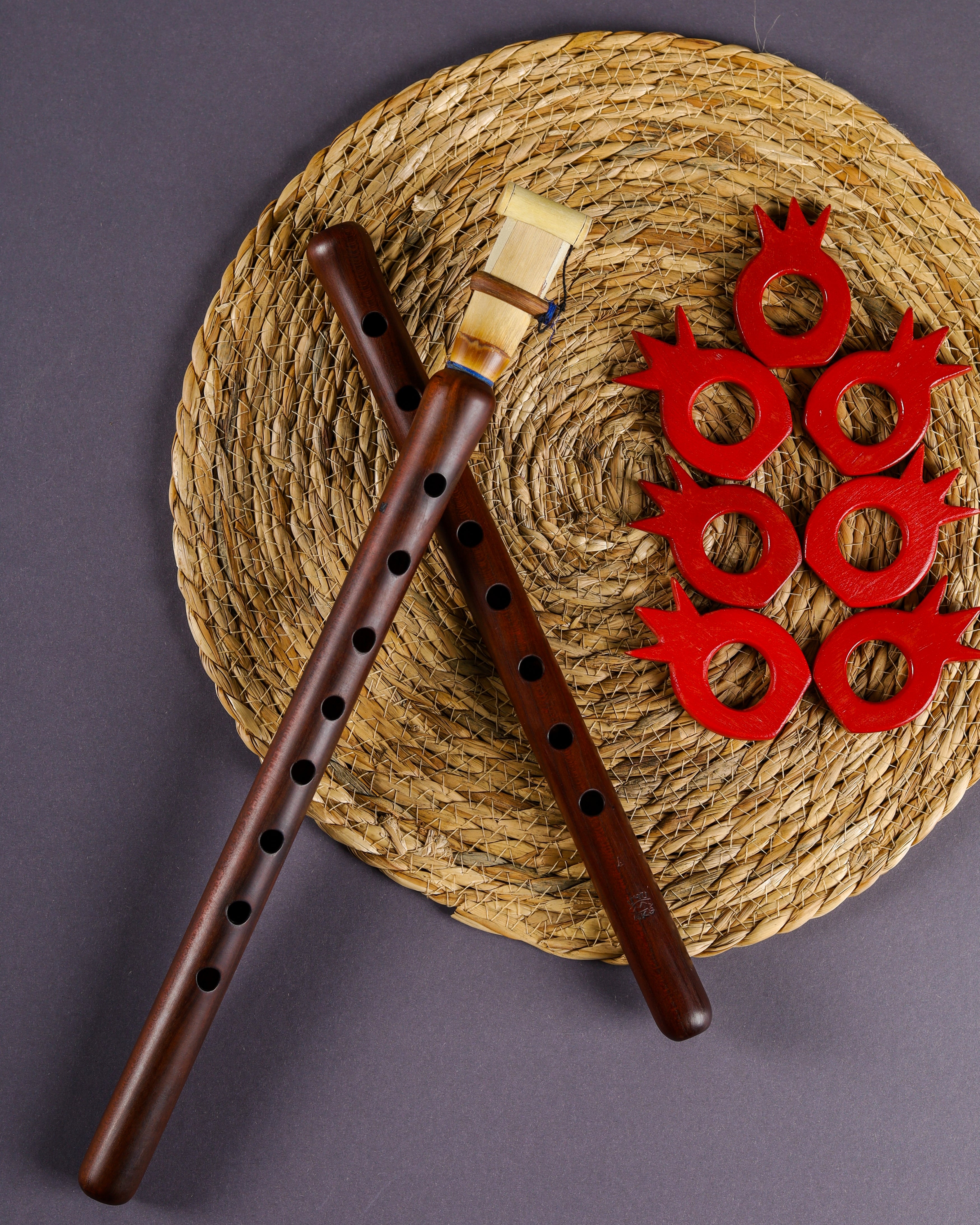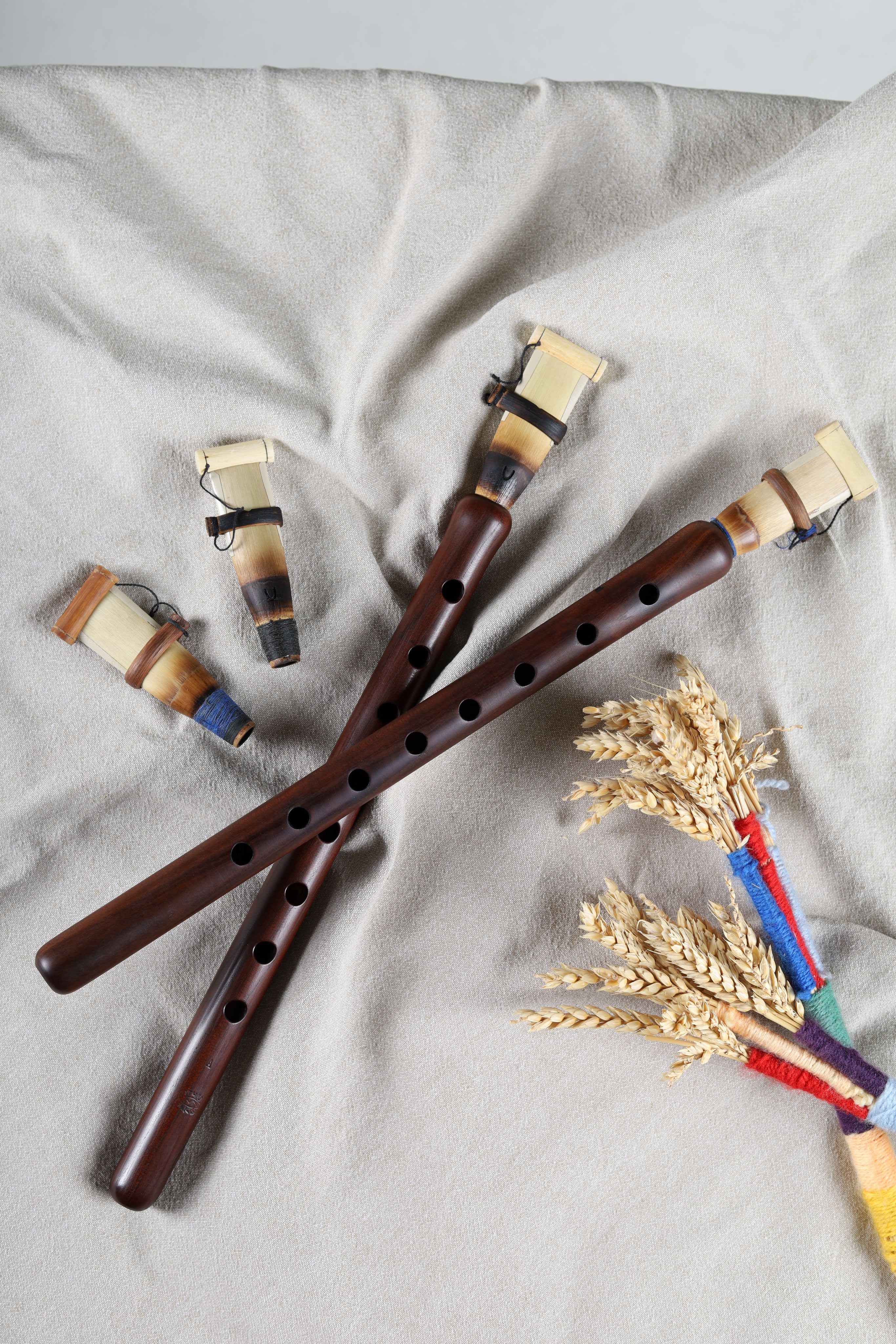Introduction
The Duduk is typically crafted from apricot wood, a material essential for achieving a pure sound, smooth playability, and good resistance to humidity. However, the Duduk often exhibits a dark hue, far from the natural color of raw apricot wood.
This article explores the various dyeing techniques used for Duduks.
The Raw Duduk – Natural Shade
In the final stages of its production, the Duduk takes on its shape and color. A raw Duduk, untreated, has a slightly yellowish hue, reflecting the natural state of apricot wood. This type of Duduk is valued for its authentic appearance, though it is less common than tinted variants.

The Traditional Duduk – Reddish or Brown Hue
The most widely used Duduk is tinted in reddish or dark brown tones. Before diving into the dyeing techniques, it’s important to understand why this color is favored for Armenian instruments:
- Aesthetic Appeal: Dark tones give the Duduk an elegant and prestigious look, particularly sought after by musicians during performances. These darker hues enhance the instrument's mysterious and melancholic aura, in harmony with the profound emotions it conveys.
- Color Evolution: Over time, apricot wood naturally darkens due to humidity. The sweat from fingers and moisture from saliva deepen the wood's shade without compromising its stability. By pre-tinting the Duduk in a dark tone, color variations caused by use are minimized.
- Durability: Applying lime strengthens the wood, making it more resistant to extreme temperatures and increasing its longevity.
Dyeing Technique
The reddish or brown color is achieved by exposing apricot wood to lime. This natural chemical reaction gives the Duduk its characteristic hue, which holds up well over time.

The Black Duduk – Black Tint
Over the past two decades, a new variation has emerged: the blackened Duduk. This shade is achieved by applying hair dye, permanently altering the color of the apricot wood. While this color is appreciated for its resemblance to ebony clarinets, questions have been raised about the authenticity of this method, as it relies on a non-traditional product.

Other Colors
Other shades can sometimes be seen on Duduks, but these instruments are typically made from non-traditional woods, sourced from regions outside of Armenia.
Conclusion
Through these different techniques and shades, the Duduk continues to evolve, offering options for musicians while maintaining its cultural essence.

